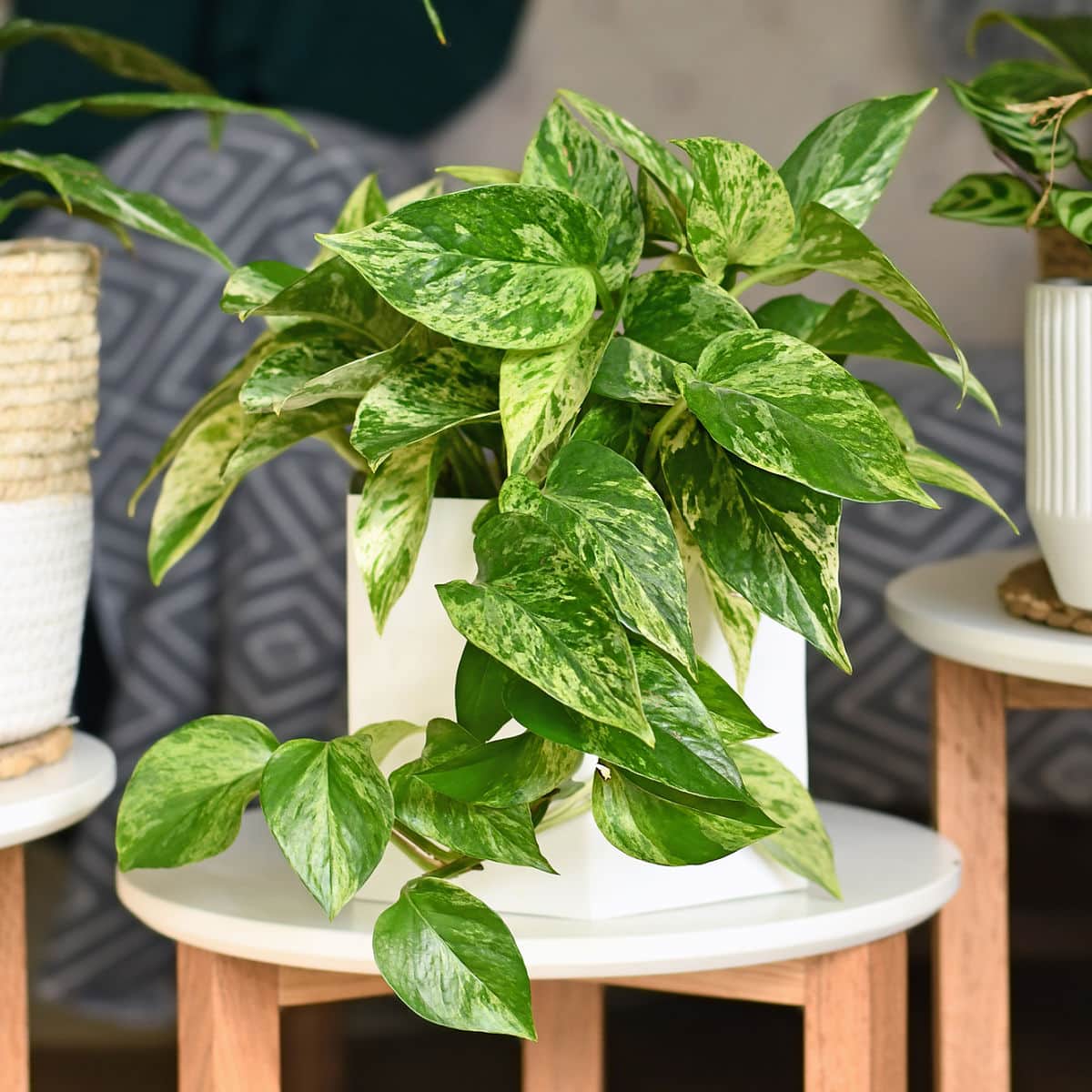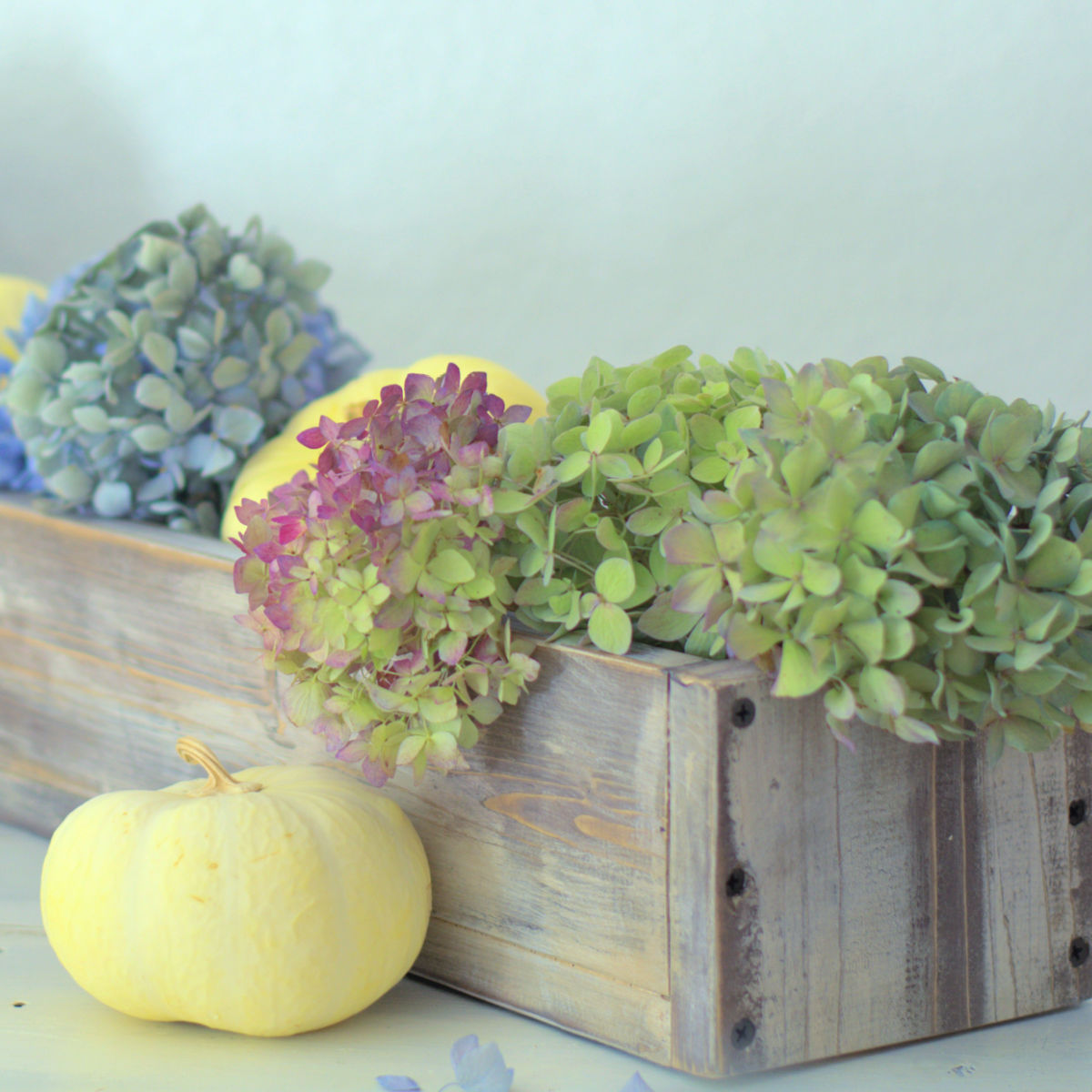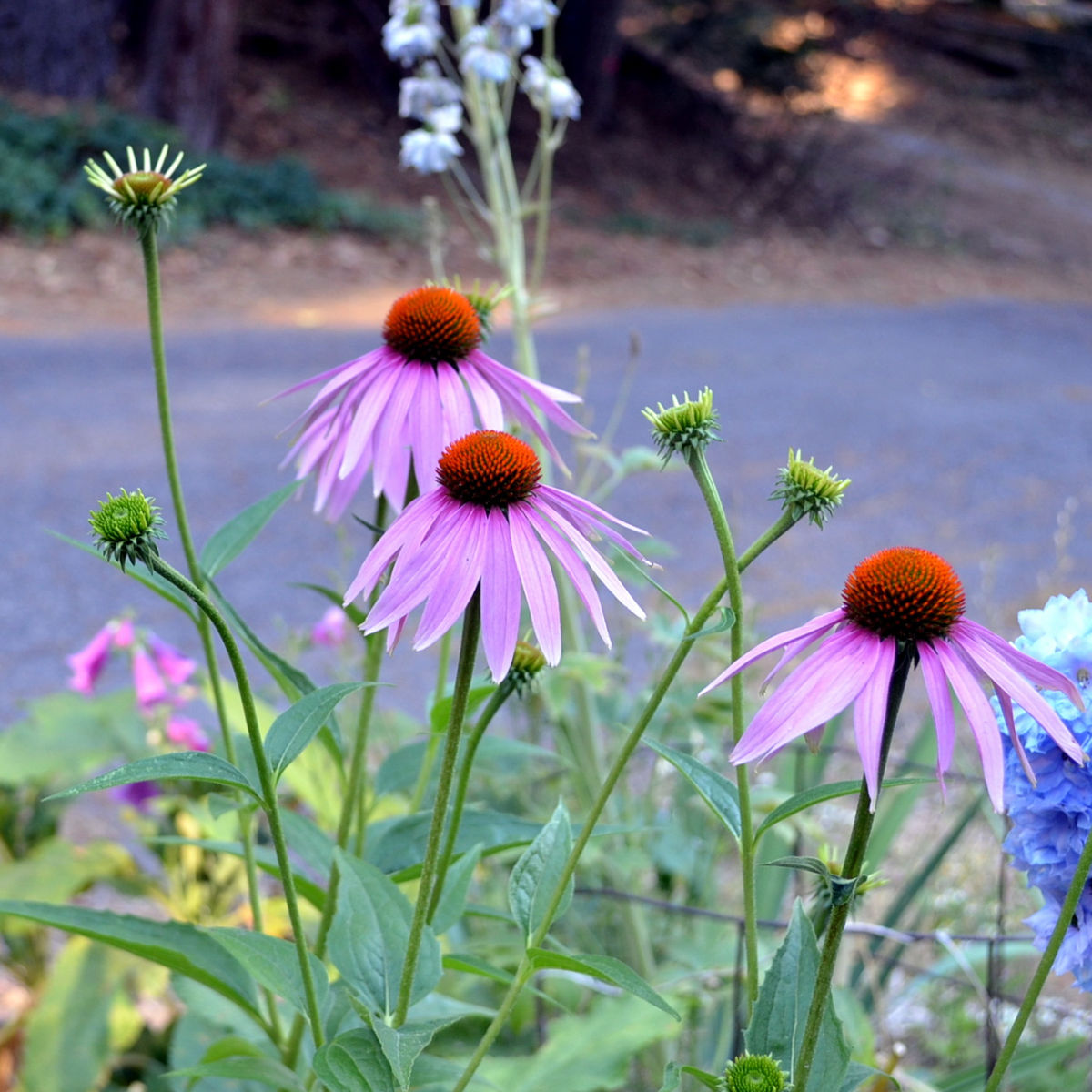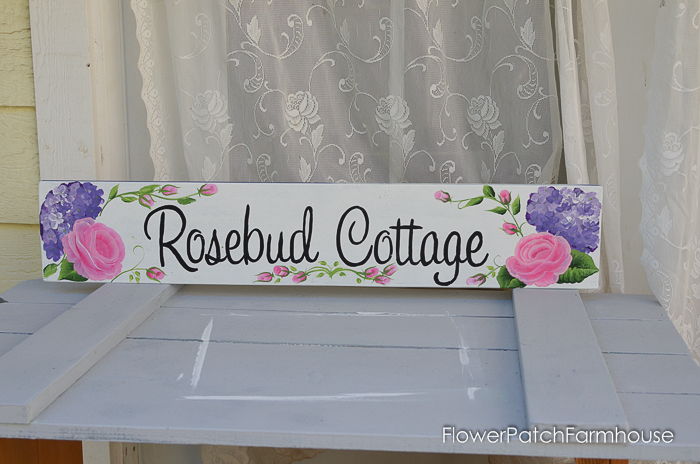Pink Princess Philodendron
Unleashing the Beauty of the Pink Princess Philodendron: A Guide to Growing this Stunning Tropical Houseplant”
The Pink Princess Philodendron, a hybrid of Philodendron erubescens, is a stunning tropical plant that has become a popular houseplant in recent years.
With its beautiful, variegated leaves that feature shades of pink and green, with gorgeous burgundy stems, it’s easy to see why this plant has captured the hearts of plant lovers everywhere.
In this blog post, we’ll take a closer look at this beautifully unique philodendron and explore its origins, care requirements, and some tips for keeping it healthy and thriving in your home.
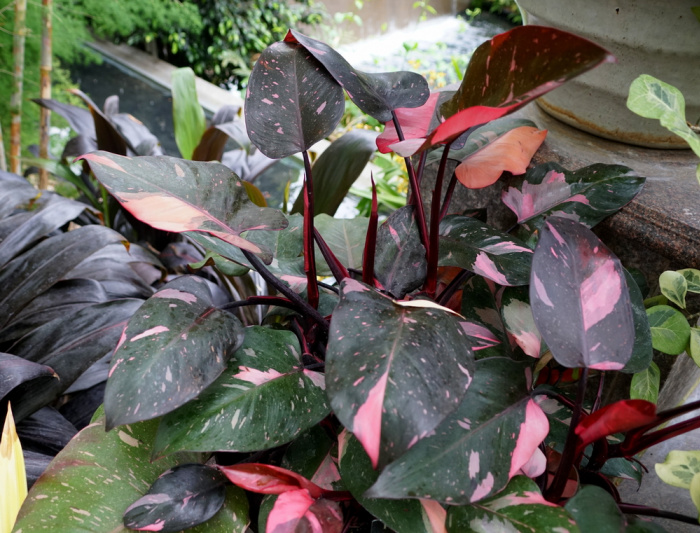
This post contains affiliate links. If you make a purchase after clicking a link I may make a small commission at no cost to you.
Origins of the Pink Princess Philodendron
The Pink Princess Philodendron is a cultivar of the Philodendron erubescens species, which is native to Colombia and Venezuela.
The actual history of the hybrid ‘Pink Princess’ is still a mystery (it was never patented) but it has been noted that it may be a creation of plantsman Robert McColley who developed many of the Philodendron hybrids we have come to love back in the 1970’s.
The Pink Princess Philodendron gets its name from its striking pink and green leaves, which are caused by a genetic mutation that affects the plant’s chlorophyll production.
The variegation is not consistent throughout the plant, which makes each Pink Princess unique and one of a kind.
Also, note that this hybrid can revert back to green at any time even if propagated from tissue culture or leaf cuttings.
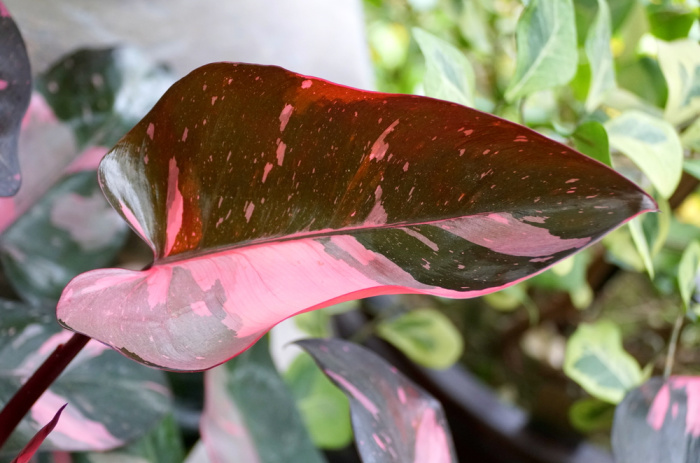
Care Requirements
While the Pink Princess Philodendron is a relatively easy plant to care for, it does have some specific requirements that need to be met in order for it to thrive.
Light
The Pink Princess Philodendron prefers bright, indirect light, but can also tolerate medium to low light.
Direct sunlight can scorch the leaves, so it’s important to avoid placing the plant in a window that receives direct sun.
Though it can tolerate medium to low light be aware that it can become leggy and the leaves will be smaller.
Remember that no matter the lighting it can revert back to all green at any time. I repeat this as they can be quite costly to purchase.
Water
The Pink Princess Philodendron likes to be kept consistently moist, but not waterlogged.
It’s important to water the plant when the top inch of soil feels dry to the touch.
Overwatering can lead to root rot, so it’s important to make sure the plant’s soil has good drainage.
I like to use a moisture meter for my houseplants like this one.
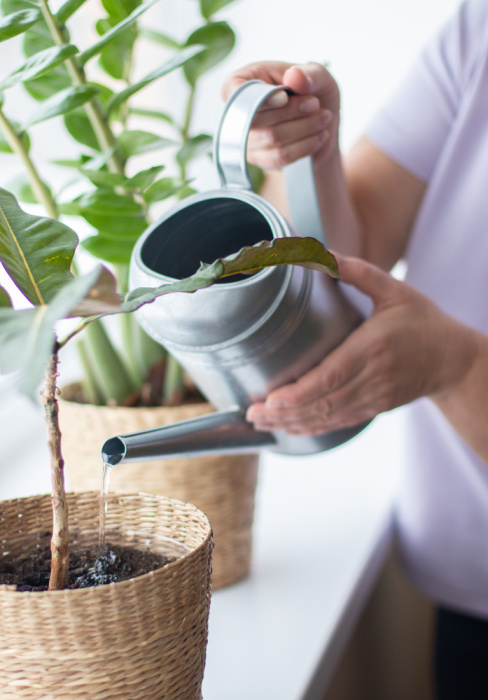
Humidity
The Pink Princess Philodendron thrives in high-humidity environments, so it’s a good idea to place it in a humid location, such as a bathroom or kitchen.
I prefer to use a humidifier in my office for my high humidity-loving house plants. This is the one I have.
It is a myth that misting your plants provides enough humidity for them so if you mist do it for a relaxing exercise and not think it is actually raising the moisture in the air.
Temperature
The Pink Princess Philodendron prefers temperatures between 65-85°F (18-29°C), but can tolerate temperatures outside of this range.
It’s important to avoid placing the plant in drafty areas or near air conditioning or heating vents.
Soil
This philodendron prefers well-draining soil that’s rich in organic matter.
It’s a good idea to use a potting mix that’s specifically designed for tropical plants.
I find a good quality potting soil that does NOT contain moisture-retentive crystals works well. The crystals can retain too much moisture leading to root rot.
Fertilizer
The Pink Princess Philodendron benefits from regular fertilization during the growing season (spring and summer).
It’s a good idea to use a diluted to 1/4 strength, balanced, water-soluble fertilizer every two weeks.
I use grow lights in winter so I also fertilize through the year as the added light keeps the plant actively growing. If you do not use additional lighting then let up on the feeding during winter.
Propagation
The Pink Princess Philodendron can be propagated through stem cuttings.
To propagate the plant, simply cut a stem with several leaves and place it in water. The plant should start to root within a few weeks.
Note: as stated before this philodendron will not always stay true, or keep its pink unique coloration even with stem cuttings.
But when you do take stem cuttings take them with leaves that are very colored to increase your chances of keeping the uniqueness!
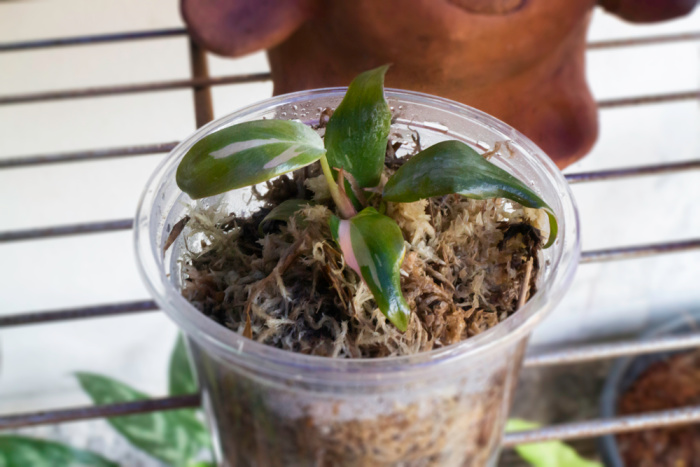
Common Problems
Like all plants, the Pink Princess Philodendron is susceptible to certain pests and diseases. Here are some common problems to watch out for:
Pests
Mealybugs, spider mites, and scale insects are common pests that can affect the Pink Princess Philodendron.
These pests can be treated with insecticidal soap or neem oil.
I remove mealy bugs with a cotton swab and some rubbing alcohol. Tedious be effective.
Diseases
Root rot and bacterial leaf spot are common diseases that can affect the Pink Princess Philodendron.
To prevent these diseases, it’s important to avoid overwatering the plant and to make sure the plant has good air circulation.
Tips for Keeping It Healthy and Thriving
Here are some additional tips for keeping your precious Philodendron healthy and thriving:
Rotate the plant: To encourage even growth and variegation, it’s a good idea to rotate the plant every few weeks.
Clean the leaves: Dust and debris can accumulate on the leaves, which can affect the plant’s ability to photosynthesize.
To keep the leaves clean, gently wipe them down with a damp cloth every few weeks.
Prune the plant: Pruning can help to encourage bushier growth and prevent the plant from becoming too leggy.
It’s a good idea to prune the plant in the spring or summer when it’s actively growing.
When pruning remove leaves that are not pink to encourage the pink leaves to thrive.
Provide support: As the Pink Princess Philodendron grows, it may need support to prevent the stems from drooping or breaking. You can use stakes or a trellis to provide support.
In conclusion, the Pink Princess Philodendron is a beautiful and unique plant that’s sure to add a pop of color to any indoor space.
With the proper care and attention, this tropical beauty can thrive in your home for years to come.
Remember to provide the plant with bright, indirect light, consistent moisture, and high humidity, and to watch out for common pests and diseases.
With a little bit of love and attention, your uniquely beautiful philodendron is sure to be the envy of all your plant-loving friends.
All the best tips
Houseplants
Houseplants for everybody! Easy to grow and enjoy.
BloomDaddy has a nice little video on propagation techniques.
